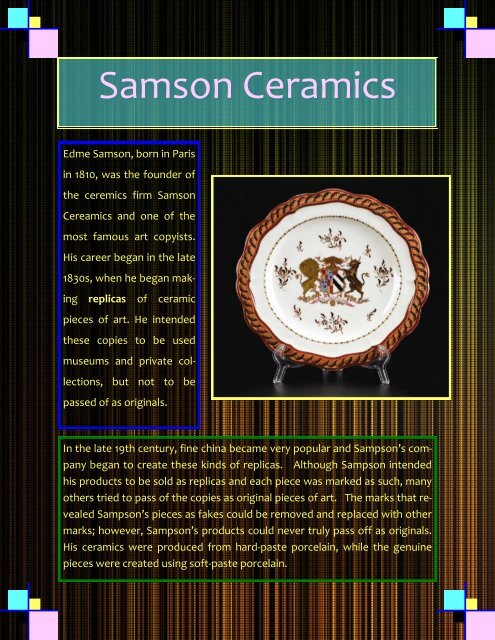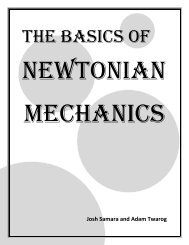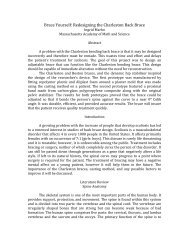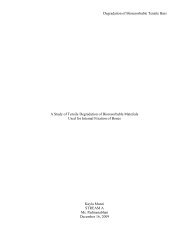Art Forgeries and Their Detection - the Scientia Review
Art Forgeries and Their Detection - the Scientia Review
Art Forgeries and Their Detection - the Scientia Review
Create successful ePaper yourself
Turn your PDF publications into a flip-book with our unique Google optimized e-Paper software.
Samson Ceramics<br />
Edme Samson, born in Paris<br />
in 1810, was <strong>the</strong> founder of<br />
<strong>the</strong> ceremics firm Samson<br />
Cereamics <strong>and</strong> one of <strong>the</strong><br />
most famous art copyists.<br />
His career began in <strong>the</strong> late<br />
1830s, when he began mak-<br />
ing replicas of ceramic<br />
pieces of art. He intended<br />
<strong>the</strong>se copies to be used<br />
museums <strong>and</strong> private col-<br />
lections, but not to be<br />
passed of as originals.<br />
In <strong>the</strong> late 19th century, fine china became very popular <strong>and</strong> Sampson’s com-<br />
pany began to create <strong>the</strong>se kinds of replicas. Although Sampson intended<br />
his products to be sold as replicas <strong>and</strong> each piece was marked as such, many<br />
o<strong>the</strong>rs tried to pass of <strong>the</strong> copies as original pieces of art. The marks that re-<br />
vealed Sampson’s pieces as fakes could be removed <strong>and</strong> replaced with o<strong>the</strong>r<br />
marks; however, Sampson’s products could never truly pass off as originals.<br />
His ceramics were produced from hard-paste porcelain, while <strong>the</strong> genuine<br />
pieces were created using soft-paste porcelain.

















